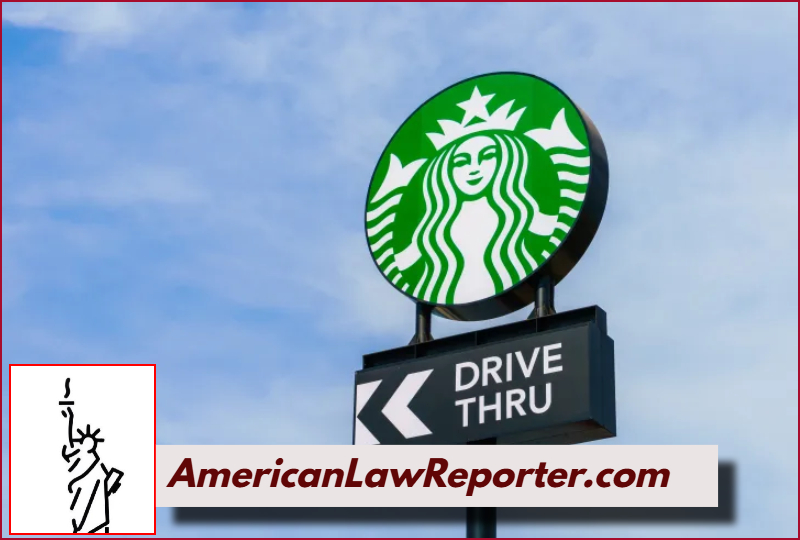A recent California jury verdict ordering Starbucks to pay $50 million to a delivery driver, Michael Garcia, for severe burns sustained in a drive-through accident raises significant legal questions about corporate liability, negligence, and consumer safety.
The case underscores key principles of tort law, particularly regarding product handling and premises liability.
This article examines the legal implications of the ruling delivered on March 17, 2025, the arguments presented by both parties, and potential ramifications for similar cases.
Liability and Negligence: Key Legal Findings
A Los Angeles County jury found in favor of Mr. Garcia after he launched legal action over the incident on February 8, 2020. He was working as a Postmates delivery driver at the time.
The trial proceeded in two phases: liability and damages. In the liability phase, the jury unanimously found Starbucks 100% responsible for the incident. The panel ruled 11-1 that Garcia bore no comparative negligence in the accident, a crucial finding that significantly impacted the damages awarded.
Under California negligence law, a plaintiff must establish four elements to succeed in a negligence claim:
- Duty of Care – Businesses owe a duty of care to their customers to ensure safe conditions.
- Breach of Duty – Starbucks breached this duty by failing to properly secure the cup caddy.
- Causation – The unsecured caddy directly caused the spill, leading to Garcia’s injuries.
- Damages – Garcia suffered severe burns, resulting in substantial financial and personal losses.
The jury’s decision reflects a firm stance on corporate responsibility, particularly in industries where customer safety is paramount.
The Role of Surveillance Footage and Evidence
One of the most compelling pieces of evidence in this case was the surveillance footage, which showed that the cup caddy was not properly secured. The spill occurred just 1.4 seconds after Garcia received the tray, suggesting an immediate failure in handling by Starbucks employees.
Additionally, expert testimony likely played a crucial role in demonstrating the extent of Garcia’s injuries and their long-term impact. The incident permanently damaged his genitals. The severity of his burns, requiring skin grafts and leading to permanent disfigurement, significantly influenced the jury’s damages calculation.
Starbucks’ Defense and Legal Strategy
Starbucks, represented by Stephen Pelletier of Price Pelletier LLP, argued that Garcia’s injuries were not solely attributable to the spill. The defense pointed to Garcia’s pre-existing childhood-onset diabetes as a factor in his medical complications. Starbucks also contended that the plaintiff’s medical treatment concluded within months of the incident, suggesting that his ongoing struggles were not directly linked to the burn injuries.
Despite these arguments, the jury ultimately sided with Garcia, awarding an amount that fell between the competing damages valuations presented by both sides.
Precedents and Broader Implications
This case draws comparisons to the well-known 1994 Liebeck v. McDonald’s lawsuit, in which a jury awarded $2.86 million to a woman burned by excessively hot coffee. While that verdict was later reduced, it highlighted the potential liability businesses face when serving hot beverages. Similarly, Garcia’s case reinforces the importance of proper handling protocols and employee training in preventing foreseeable accidents.
The verdict also raises questions about potential appeals. Starbucks has publicly stated its intent to appeal, arguing that the damages awarded are excessive. Under California law, an appellate court may review whether the award is proportionate to the harm suffered, considering factors such as economic losses, pain and suffering, and corporate negligence.
Following the verdict, a Starbucks spokesperson expressed sympathy for Garcia but strongly disagreed with the outcome.
“We sympathize with Mr. Garcia, but we disagree with the jury’s decision that we were at fault for this incident and believe the damages awarded to be excessive. We plan to appeal. We have always been committed to the highest safety standards in our stores, including the handling of hot drinks,” the company said in a statement.
Conclusion
The $50 million verdict against Starbucks serves as a significant legal precedent in consumer safety and corporate liability cases. It demonstrates the importance of rigorous safety measures in the food and beverage industry and highlights the legal risks companies face when failing to meet those standards.
As Starbucks moves forward with its appeal, legal experts will closely watch how appellate courts handle the case, particularly regarding the proportionality of damages and the broader implications for similar lawsuits.

